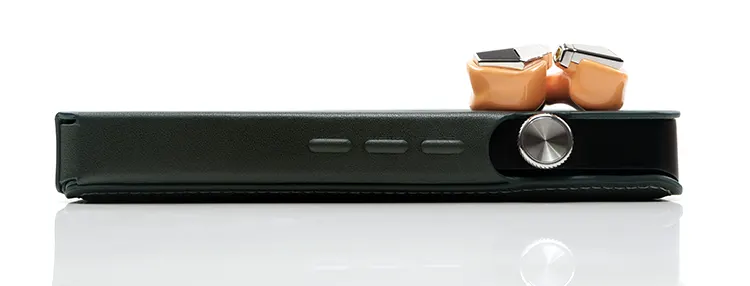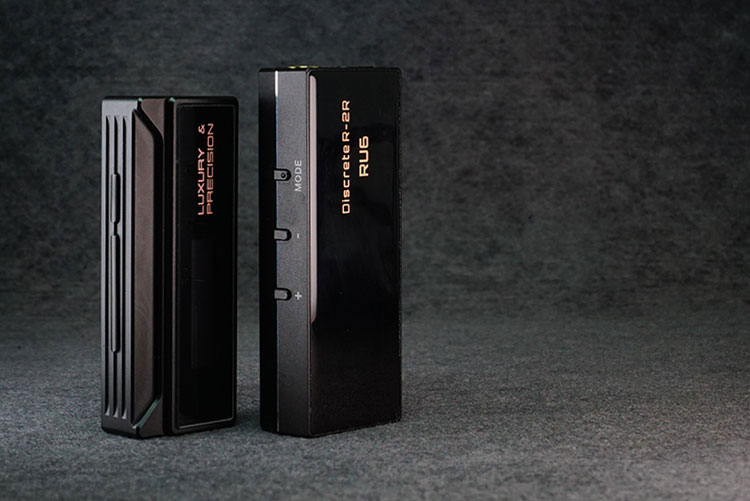Sound Impressions
The following sound impressions of the Campfire Audio Supermoon were completed using a mix of the HiBy R8 II and the iBasso DX320 MAX Ti for both source and amplification.
Summary
Perhaps the most balanced tuning to come out of the CA stable since Andromeda? Maybe, but certainly, it’s the one that I find to be the most flexible for a very wide range of genres.
Put it this way. The Solaris Stellar Horizon is perhaps their most neutral high-end IEM currently in production with the Bonneville and the Trifecta the most colored and ‘fun sounding’.
The Supermoon sits somewhere in between the former and the latter with a rich and dense low-end, gorgeous vocal presence and timbre, and a relatively lively though not overly pushing set of highs. It’s a lovely balanced tuning and one that works perfectly for my listening tastes.
And it does sound very different to any of the dynamic driver models, particularly on the lows which offer superb depth and weight but without that distinctive dynamic driver ‘pneumatic punch’.
I think that is where the Bonneville makes its mark, at least on the lows. The Bonneville brings the slam and bloom whereas the Supermoon brings the texture and density sub-50Hz.
Where the Supermoon can trip people up is the 4-6k range which has a bit of a rise and can catch some treble overtones.
With some sources and recordings, it is not quite as refined as the Stellar Horizon for percussion timbre or as smooth as the Bonneville. However, I can forgive that considering just how juicy the texture and body are through the rest of the range.
Power is also something to mull over. It sounds good with almost every source I paired it with but the Supermoon can scale sounding tighter and more precise with better power. I would add nothing too relaxed sounding either. A clean, dynamic source with good power will produce an optimal performance.
Frequency Response
The Supermoon FR peaks from 20Hz to 80Hz, again at 1-2k, and with some minor bumping around 7k. You will be welcomed with a killer sub-bass performance, some lifted vocals presence, and a sheen over higher-pitching upper-mid percussion passages.
From 80Hz down to around 600-800Hz the Supermoon drifts down to something close to Harman neutral with less warmth and bloom compared to the more elevated Bonneville tuning.
Heck, it is arguable that it has less presence there compared to the Stellar Horizon also although the Horizon’s bass dB gain sub-100Hz is much lower so it carries less of a fundamental with it.
From 2-5k it reasonably lifted, much more so compared to the Bonneville and if you do compare them side by side you will notice the Bonneville vocal imaging struggle to be heard as clearly as the Supermoon when both low-ends are at full tilt.
Treble tuning tends to fade a little earlier than some CA’s hybrid or BA models at around 8-10k giving it just an ever-so-slightly darker tuning and shifting the energy a bit more into the lower treble and upper-mids.
Peaking for some ears may be more prevalent than others in those upper-mids and I would say the Supermoon can be at its most picky in this area.
My personal experience with the silicone tips was generally favorable for this region. Feisty in part but not the same type of fizz and brittle tones you would expect from an overly-strained BA driver.
Timbre
Body. The Supermoon has loads of it mixed in with some welcome upper harmonic influence making it a superb choice for lovers of chugging thrash chords and deeper kick bass drums.
Much of that is drawn from a rock-solid fundamental from its sub-bass lift giving some impressive authority to lower-register instruments. It’s not an overly rounded tone though with the lower-mids cut preventing bloom and muddiness from drowning out the clarity despite the weight.
The bass can sound a bit soft with decay lengthening from weaker or warmer sources. A clean punchy amplifier with good power will tighten up the Supermoon bass performance to a very high level.
Heck, you can even go for a full desktop amplifier setup with the Supermoon and it will produce some wonderful dynamics so I do know it can scale quite well.
The Supermoon mids can be more moody depending on the pairing and music being fed. Overall, I find it has a balance between natural and firm with some nice body but at times percussion can have a bit of splash and zing to it.
It’s not a peaky harsh sound though, more of a dominant harmonic in some mixes. It can work well with some metal genres but for brighter vocal head voicing it might sound harder-edge.
The treble is relatively clean and compared to the BA variants in the CA line-up I would say it delivers better body and texture but it is not quite as articulate and as focused as those same variants when it comes to minute detail.
Staging & Dynamics
You get some fantastic depth with the Supermoon alongside a lifted vocal presence to give it some excellent balance.
Lower mids tuck in behind the vocals, more so than the Steller Horizon though I find the clarity and presence to be well above average with that sub-bass fundamental granting some welcome gravitas to instrumental notes.
The staging width can vary depending on what you feed it. With most dongles save for the Cayin RU7 it can sound deep but intimate with a very close feel to the presentation.
DAPs stretch out the staging and improve the imaging and separation as well as progressively tighten up the bass dynamic range and improve its control considerably.
Once you start feeding the Supermoon some quality power from a DAP or even a desktop amplifier the presence at the opposite ends of the stereo field sounds firmer, enhancing the perception of width and adding some welcome air.
Lower-treble energy can heighten the upper-mids focus though this can be track dependent. Splashier percussion work on clean recordings can sound more prominent but it’s not razor sharp so it’s not a piercing sound but rather a heightened presence.
So, for example, a classic metal recording will emphasize those kick drums, vocal screeching, and chord crunching but will also place a spotlight on the often brighter percussion mixes giving the recording some welcome contrast.
Synergy
Efficiency & Sensitivity
The Campfire Audio Supermoon will not tax your source’s power handling abilities too much at just 15.5Ω but it will require reasonable levels of gain when compared to almost any other Campfire IEM with its 54 mVrms requirement to hit 94 dB @ 1 kHz.
As an example, the Bonneville is rated at just 14.59 mVrms to reach 94 dB @ 1 kHz for SPL, and the 4.4Ω Stellar Horizon is even lower at just 9.145 mVrms.
The only CA IEM to require more mVrms and gain is the entry-level single BA Satsuma at 46.4Ω and 67 mVrms to hit 94dB SPL @ 1kHz. I am guessing most would not have realized that a single BA can require that much power.
What that means subjectively is that while the Supermoon does not necessarily need to move out of low gain on DAP’s balanced output such as the HiBy R8 II it will require around 10-20 steps more volume compared to the likes of the Stellar Horizon and the Bonneville.
I would also recommend keeping most dongle DACs on a high-gain setting to get the best out of the Supermoon and if possible use a balanced version of the Time Series cable for better power delivery.
The Supermoon does sound snapper with better channel separation on the equivalent balanced output of most sources and dongles.
DAP Pairings
I tested four DAPs with the Supermoon over several days and came away with two strong preferences for pairing synergy, power, and clarity. With clarity, you could further refine that with as neutral to clean sounding and power meaning strong dynamic range performance.
For example, the top DAP out of the four I tested was the iBasso DX320 MAX Ti. Granted, it is a costly preference but it offered the strongest output capability of the competing DAPs combined with excellent gain stages that delivered not just improved depth and dynamics but also more resolution from the Supermoon and a perception of good pace and timing.
Of the four, the Supermoon felt optimal with the DX320 MAX Ti and sounded controlled and well-defined but importantly, very lively and detailed in its presentation.
On the flip side, you had the Cayin N7, a smoother tone ideal for the body through the mids, and a more natural vocal timbre from the Supermoon.
The holographic staging was there also though the DX320 MAX Ti did offer more snap on the lows. This is where the N7 sounded at its weakest with a slower-sounding bass and a longer rate of decay.
A great halfway house between the DX320 MAX Ti and the N7 is the HiBY R8 II. It’s a little warmer and denser sounding than the DX320 MAX Ti so mids and slightly more liquid-like in their delivery.
The Supermoon bass punch was also sharper and more energetic though it did not deliver quite the depth and air of the iBasso flagship.
The iBasso DX320 with AMP12 made an admirable attempt to imitate its bigger sibling’s performance with the Supermoon but I found the note thickness too lean and the bass a bit light.
Dongle Pairings
I tested four dongles so I will start with my personal preference for the Supermoon which is good vocal presence, tight bass, and a bit of treble reach to balance out the bass weight.
Of the four that met that, the Luxury & Precision W2 came out as the most balanced performer. The HiBy FC6 comes close in terms of beautiful texture and a nice weighty bass response.
However, the treble coloration is a bit uneven and the staging lacks a bit of height so it is an intimate experience with the Supermoon though with the best depth and power of the four dongles.
The W2 has better control of the bass, sounding punchier with better definition. Vocals on the Supermoon are forward in this pairing with a nice blend of treble presence to give them some interesting contrast.
I also like the Cayin RU6 synergy. The bass is a bit pillowy and softer with nowhere near the impact or weight of the first two dongles but the mids and highs are silky smooth and sweet sounding on the Supermoon.
The Cayin RU7 will give you lots of space but the vocal positioning and bloom were less marked giving it more of a stand-offish type of sound.
It is an admirable pairing for teasing out the most technical and expansive sounding from the Supermoon but lacks the vocal immediacy that I enjoy with this monitor.






